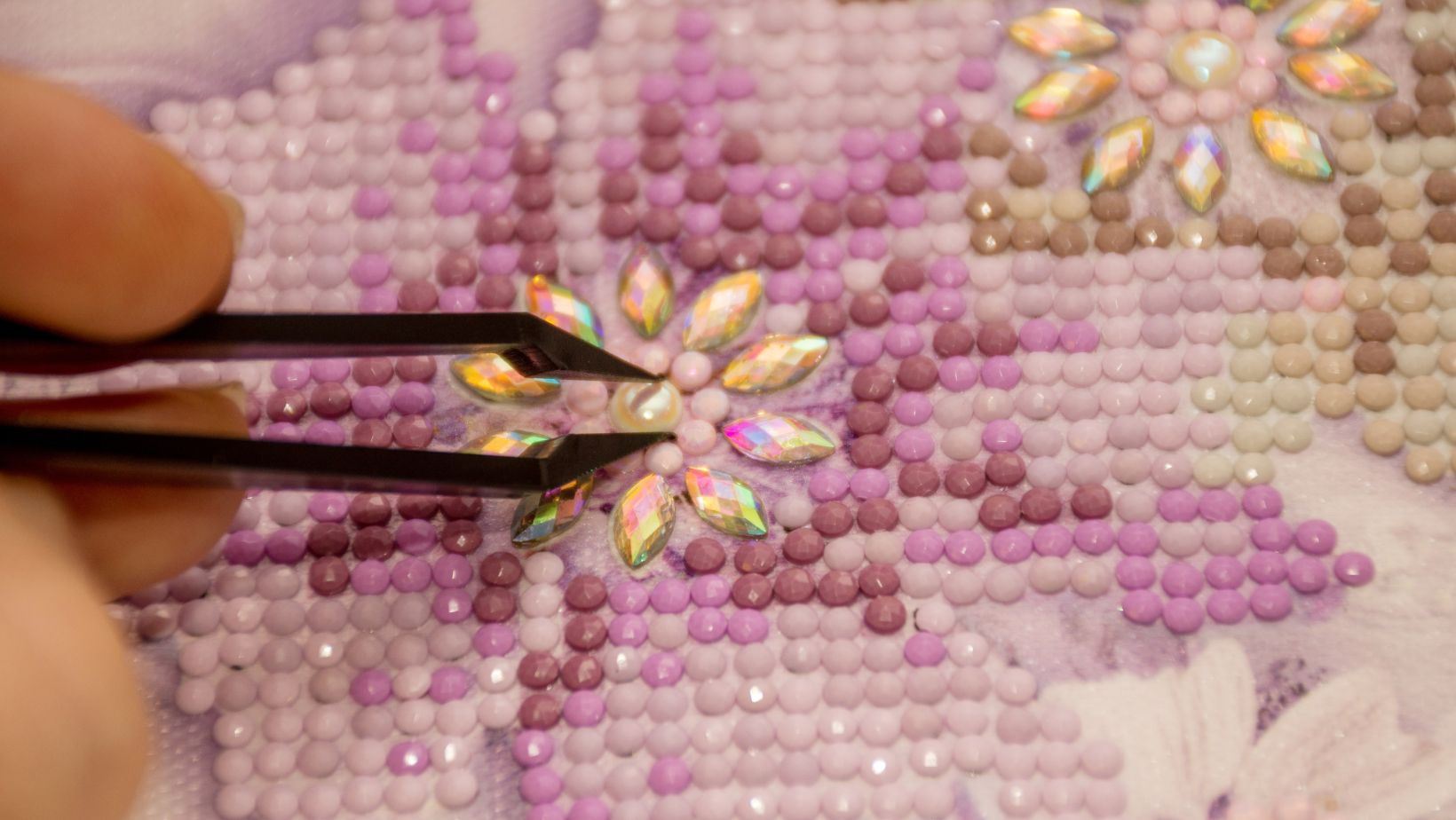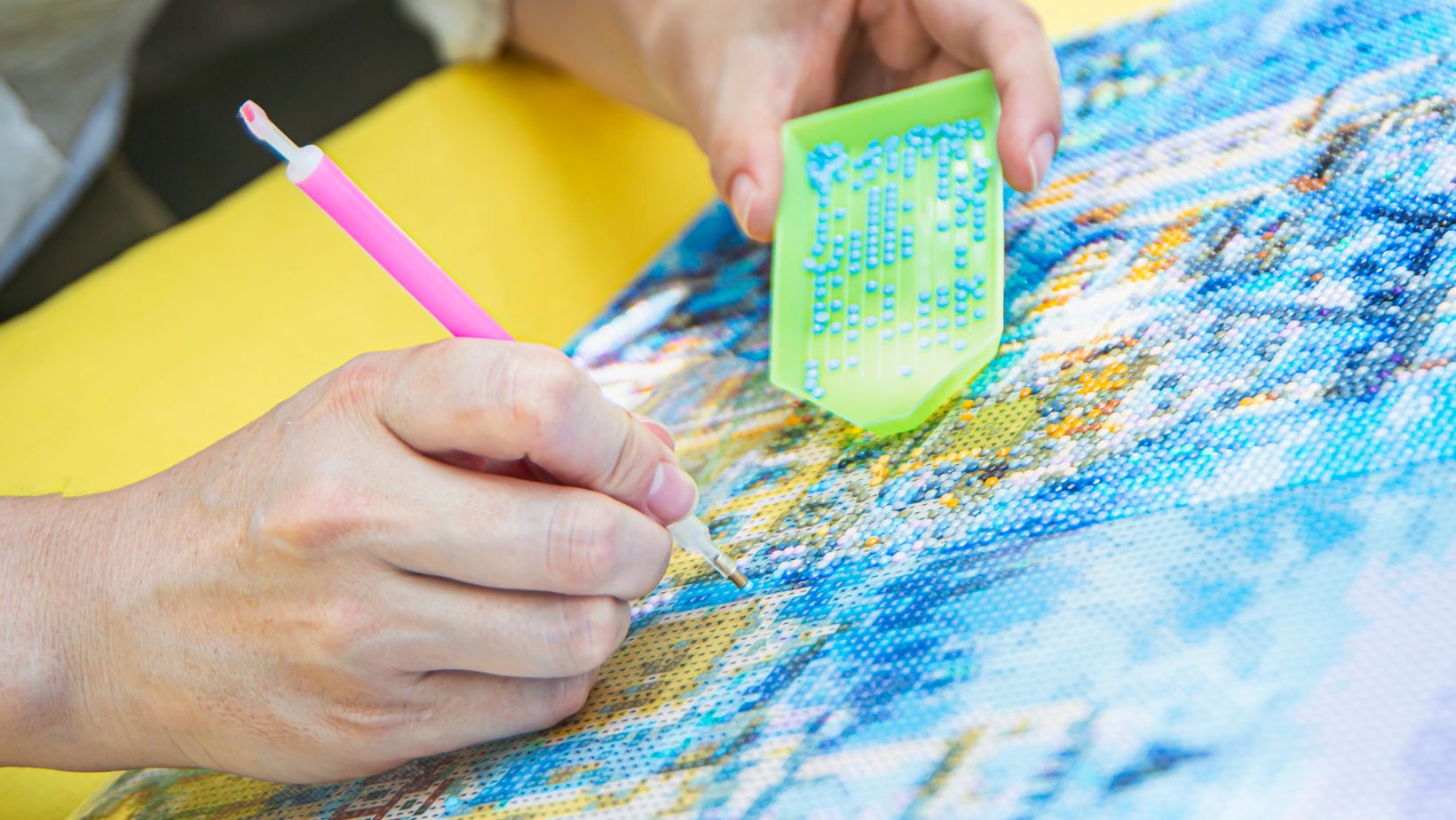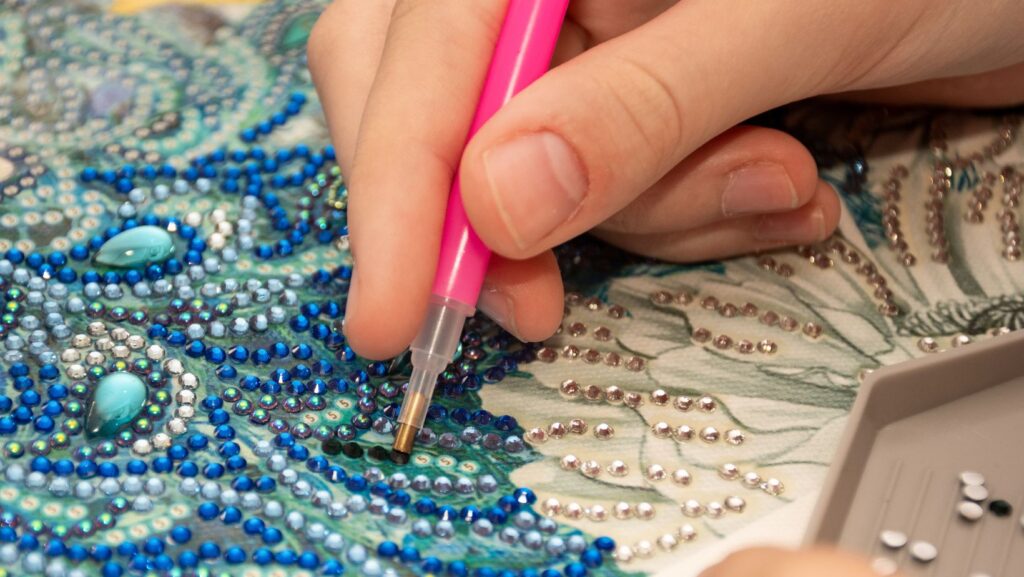Diamond art painting has become a popular craft for adults seeking relaxation and creativity. Beginners often wonder about the ideal size to start with as they embark on their first project. For newcomers to diamond painting, a small to medium-sized canvas ranging from 30×30 cm to 40×50 cm is typically the best choice.
Smaller canvases are more manageable and less overwhelming for those new to the craft. They allow beginners to learn techniques and gain confidence without committing to a lengthy project. These sizes also provide enough detail to create an attractive finished piece while being completed in a reasonable timeframe.
As skills improve, crafters can gradually move to larger sizes. Diamond art for adults offers a wide range of options, from simple designs to more complex patterns. Starting small helps build a foundation for tackling bigger, more intricate projects in the future.
Key Takeaways
- Small to medium canvases are ideal for beginners in diamond painting
- Starting with manageable sizes helps build skills and confidence
- Gradually increasing canvas size allows for progression in the craft
Choosing the Right Diamond Painting Kit
Selecting an appropriate diamond painting kit is crucial for beginners to enjoy the craft and achieve satisfying results. Canvas size, drill shape, and design complexity all play important roles in the overall experience.
Understanding Canvas Size and Type
Canvas size greatly impacts the level of detail and time commitment required. Smaller canvases, typically under 12 x 12 inches, are ideal for beginners. These allow newcomers to learn techniques without feeling overwhelmed and provide quicker completion times. Larger canvases offer more intricate designs but require more time and patience.

Full drill kits cover the entire canvas with diamonds, while partial drill kits leave some areas of the pre-printed image exposed. Full drill kits provide a more immersive experience but take longer to complete. Partial drill kits can be less time-consuming and still produce stunning results.
Canvas quality matters, too. Look for durable, clearly printed canvases with strong adhesive to ensure diamonds stay in place.
Comparing Square Drill and Round Drill
Diamond paintings come with either square or round drills. Square drills fit together tightly, creating a mosaic-like appearance with no gaps. They can be more challenging to place but result in a neater finish.
Round drills are easier to pick up and place, making them popular among beginners. They leave small gaps between each diamond, which can create a sparkling effect. Round drills are more forgiving of minor placement errors.
The choice between square and round drills often comes down to personal preference. Beginners might find round drills less frustrating to work with initially.
Assessing the Complexity and Detail
Design complexity is a key factor in choosing a diamond painting kit. Simple designs with larger color blocks are best for beginners. These allow novices to focus on technique without the pressure of intricate details.
As skills improve, painters can move on to more complex designs with smaller details and a wider color range. Highly detailed kits produce stunning results but require more time, patience, and precision.
Consider the number of colors in a kit. Fewer colors generally mean less complexity, while more colors create richer, more nuanced images. Beginners might start with 15-20 colors before progressing to kits with 30 or more.
Essential Tools and Accessories for Beginners
Diamond painting requires specific tools and accessories to create stunning artwork. The right equipment can enhance the crafting experience and improve the final result.
Starting with the Basic Tools
A standard diamond painting kit typically includes essential tools for beginners. The diamond applicator pen is crucial for picking up and placing resin diamonds onto the canvas. This pen often comes with a metal tip and a plastic tip for different-sized drills. Tweezers provide precision for placing individual diamonds and fixing any misalignments.

A wax pad or adhesive putty helps the applicator pen grip the diamonds. Trays are used to hold and organize the diamonds by color, making them easily accessible during the painting process. A quality canvas with clear symbols and good adhesive is vital for a successful project.
Enhancing the Experience with Additional Accessories
As beginners progress, they may want to explore additional accessories to improve their diamond painting experience. Multi-placers allow artists to place multiple diamonds simultaneously, speeding up the process for larger areas of the same color. These tools come in various sizes, accommodating 3, 6, or even 9 drills at once.
A light pad can significantly enhance visibility, especially for canvases with darker colors or smaller symbols. It provides even illumination, reducing eye strain during long painting sessions. Storage containers help organize loose diamonds and keep them safe between crafting sessions.
For comfort during extended painting periods, ergonomic grips for applicator pens can reduce hand fatigue. Magnifying glasses or craft glasses may benefit those working on intricate designs with small symbols.
Conclusion
Choosing the right size diamond painting for beginners is crucial for an enjoyable experience. Small to medium canvases, ranging from 30x30cm to 50x60cm, offer an ideal balance of detail and manageability. These sizes allow newcomers to learn techniques without feeling overwhelmed. As skills improve, painters can gradually progress to larger, more intricate designs.

